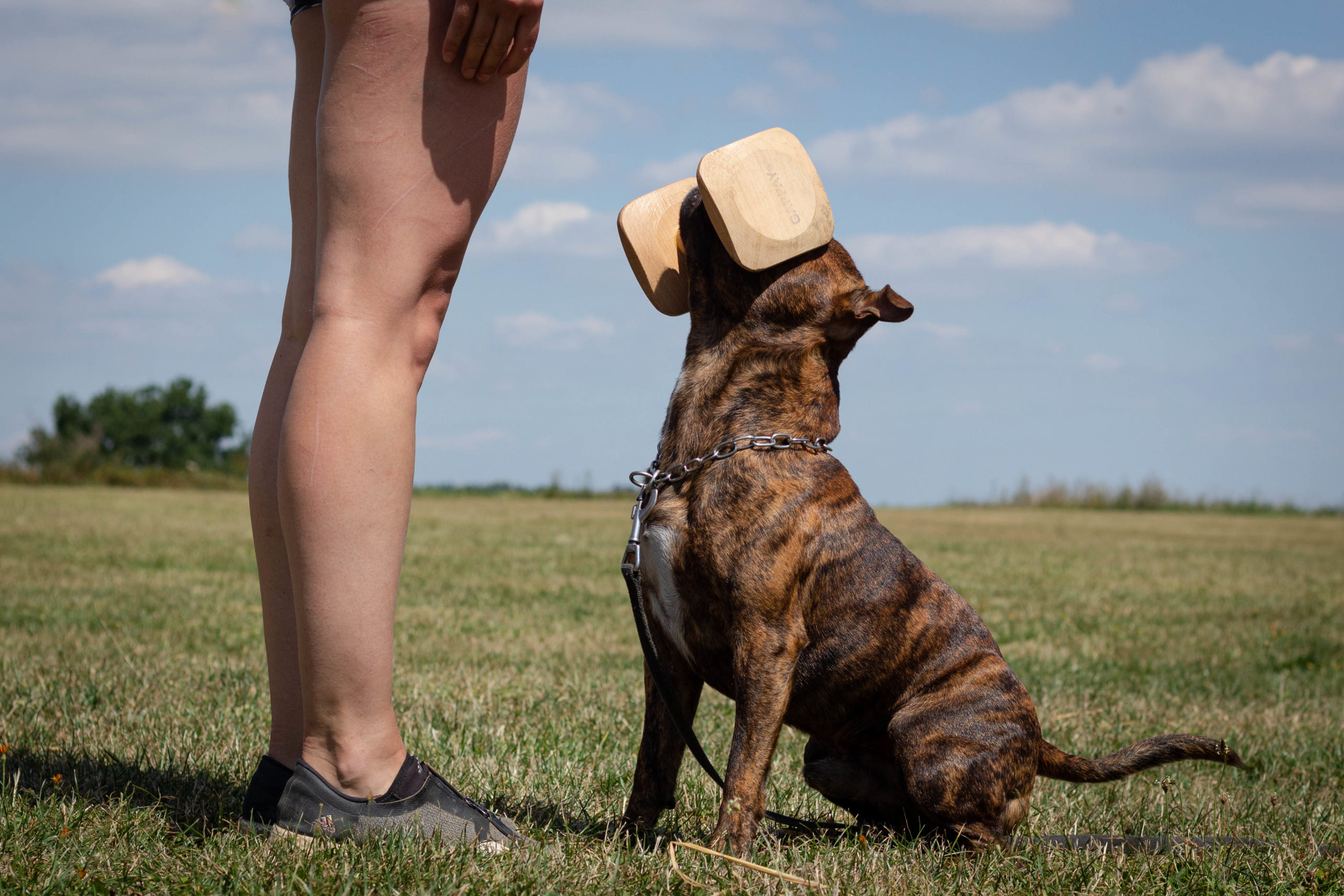
30 Srp Retrieve Components Overview – Part 4: Frontsit and Holding the Dumbbell
After three articles on the setup of the retrieve, the throwing portion, and the actual fetching, we are finally coming to the end. Today, we will discuss the final section of the exercise: the frontsit, the dumbbell hold, outing the dumbbell, and switching positions.
The frontsit
After the dog picks up the dumbbell and zooms back to you comes another rather conflicting situation: the switch from retrieving to frontsit. Your dog should be running as fast as possible towards you, but then he has to start thinking, slow down (but not too much), sit in the precise right spot, and immediately calm down so he can hold the dumbbell properly.
This is everything but easy for the dogs, and it is imperative that you spend ample time practicing the frontsit with the dumbbell itself, without the added complications of retrieving. Only then will your dog be able to perform it under pressure and with speed.
Pay attention to ensure that your dog is sitting straight in front of you, not too far away, and not touching you at all. I always say that if I had to choose between whether a dog touches me during the frontsit or sits too far away, I would choose him being too far away. Touching or—dog forbid—crashing into the handler is non-negotiable. That’s a guaranteed point deduction. Sitting too far away is ambivalent—one judge might take points, but another might consider it still within limits.
Holding the dumbbell
After a correct fronsit, an even calmer and more focused part of the exercise takes place: holding the dumbbell. I always say that a superb retrieve can be recognized by having a calm, collected handler who does not have to rush anything during this phase of the retrieve.
The sequence of events should look like this:
- The dog performs a correct fronsit and switches immediately from rushing towards the handler to calmly sitting and holding the dumbbell.
- The handler waits for three seconds and does not rush to take the dumbbell from the dog.
- The handler puts their hands on the dumbbell with a controlled motion and leaves them on the dumbbell for a second or two while the dog does not react to the hands of the handler moving at all.
- The handler says the “out” command without moving their hands and the dumbbell. The dog outs the dumbbell, pulling his head backward and letting go of it completely and still looking up at the handler.
- The handler leaves the dumbbell in place, not moving for one or two seconds, without the dog reacting to this at all—no biting into the dumbbell or any other form of unrest.
- The handler puts the dumbbell, with a controlled motion, in their right hand and stands still for about three seconds with the dog still not moving and still looking up at the handler.
- The handler says the “heel” command with the dog changing position from the frontsit to the basic position very quickly, switching from low and calm energy to a swift motion.
- The handler waits for three seconds before praising their dog as the regulations permit.
Concealing errors and imperfections
The above-listed sequence of events is what’s ideal. These are what the entire retrieving process should look like and what you should strive to teach your dog. Any rush during this process is usually caused by handler error (being nervous at the trial and rushing things) or trying to conceal an error.
Handlers tend to rush outing the dumbbell when they know their dog can’t hold it calmly. They rush putting the dumbbell away to their right side when the dog might bite into it again after the out. They rush the “heel” command in fear of their dog switching positions on his own.
It makes sense, though. If you know your dog has problems with a particular part of the final section of the retrieve, it is usually a good idea to rush it a bit and not let the dog make a mistake. A good judge will pick up on that and might deduct half a point, which is still better than losing a full point or more for a mistake when the dog drops the dumbbell or bites into it.
So, rush something if you know it’s necessary, but train and control yourself to not rush involuntarily at the trial. And if you know a particular part is very good, prolong it to show it off. Let your dog hold the dumbbell a second or two longer than necessary to show he has a really calm hold. Generally, try to do this section as calmly and collected as possible.
There you have it. What is seemingly one exercise actually consists of almost a dozen little sub-exercises that you have to train separately and then put together in a controlled, well-thought-out manner. Having a perfect retrieve is very hard and demanding; every dog has his limits, and you have to know how far you can push him. However, I think it is important to know the ideal performance technique well so we can strive for it.
How is your retrieve? Do you have any problems with it? Which part do you struggle with? Let me know, and always try to be mindful when training such complex exercises.
